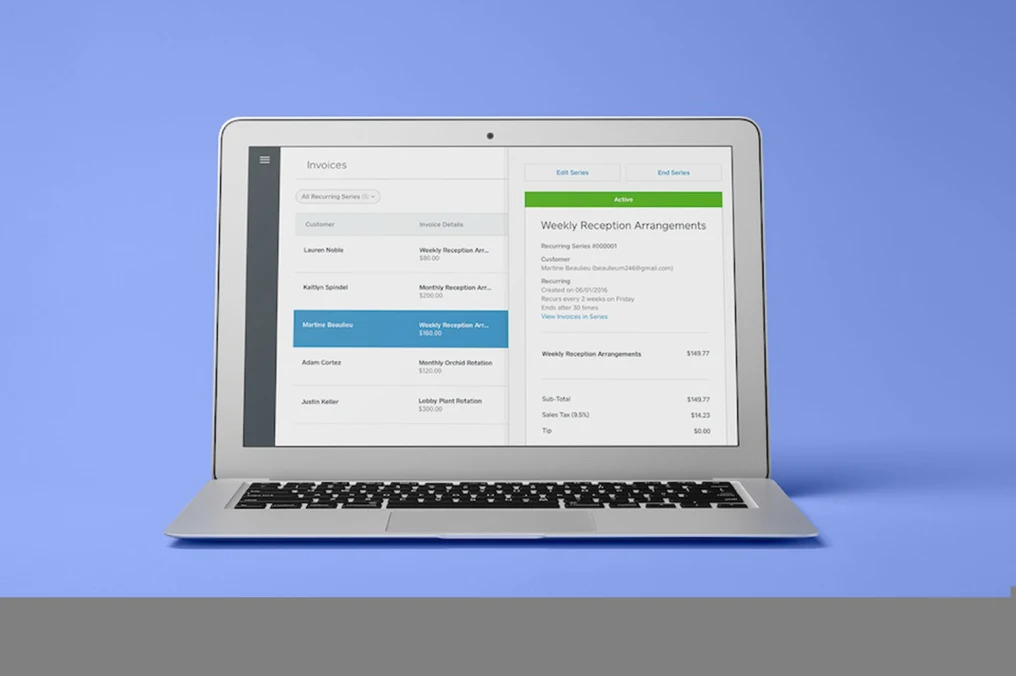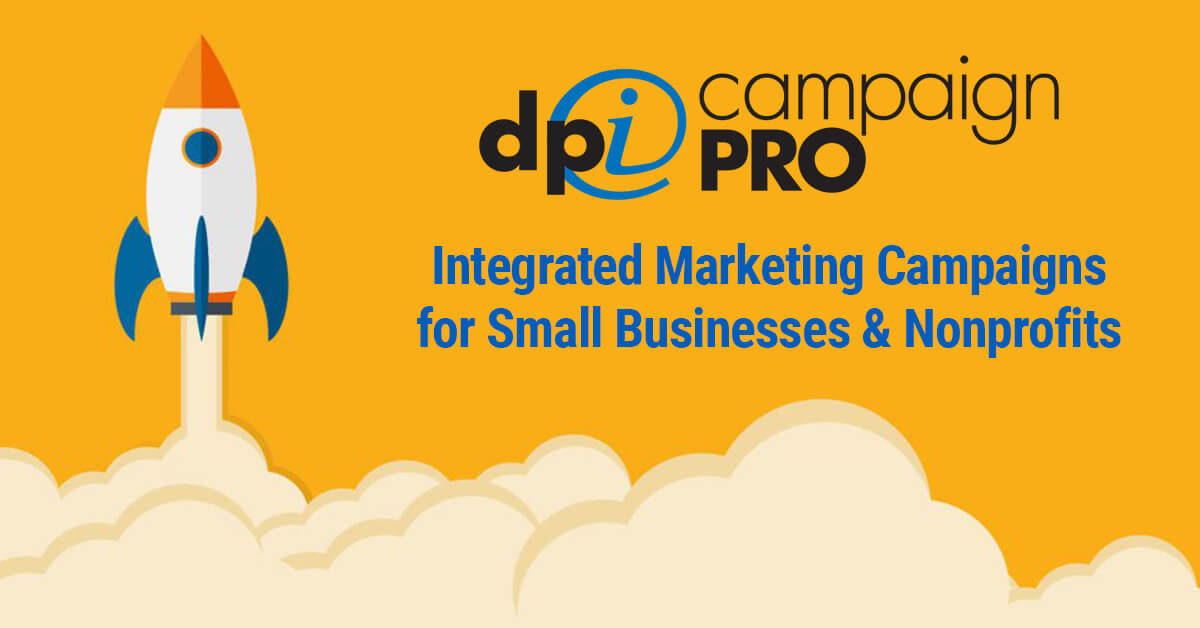How To Create and Market a Service-Based Product
Selling services to customers can be challenging – especially when compared to selling a tangible product. Is there an easier way to sell services? There is, if you market your service-based product. Marketing your service as a product isn’t a new idea – in fact, some businesses, like DPi Graphics, have been doing it for years. But how do you go about “productizing” a service?
HOW TO “PRODUCTIZE” YOUR SERVICE
1. STOP THINKING OF YOUR SERVICE AS A SERVICE
First, you need to stop thinking of your service as a service – think of it in terms of a product – a single thing that people can just purchase. For instance, it could be a bundle of services that is sold for a fixed cost per month. It could be a single service being offered at a fixed monthly subscription rate rather than a per hour charge. But, don’t you lose money not charging by the hour? Possibly. The key here is to make the subscription service more valuable than just working by the hour on a project. And yes, you can put in many more hours that you’re “not getting paid for”, however, there are ways to curb scope creep and letting your customers take advantage of your service-based product.
For example, your subscription service product could be limited to so many hours during the subscription period – say, over the course of the month, limited to 80 hours for one month at this subscription rate. You could then create another subscription service product and charge more per month but allow more hours per month, and so on. Thinking of your service as a product is a bit of a mindset shift – but once you do, you can see many more options available for multiple service products and revenue streams.
You’re probably saying “this sounds a lot like a retainer” – and you’d be right – except it’s not. The difference between this and a retainer is simply the lack of a contract that is signed and agreed to by both parties for a specific period of time, IE a year, 2 years, etc. With a subscription-based service product, it’s a recurring charge every month, except the customer can cancel at any time (usually). No contracts, no agreements, no messy retainers.
2. DETERMINE HOW YOU WILL GET PAID
Ultimately, getting paid is the Mecca of any job – whether it’s a service or a product – the endgame is payment for products or services. The idea of productizing your service is to enable you to get paid faster and upfront. Typically, with most services offered, payment is billed after the service has been rendered. That leads to billing, chasing clients for payment and more headaches. Using an online, subscription-based service product, eliminates the headaches associated with billing and collections if a client doesn’t pay after you’ve performed the service. In fact, this forces them to pay up front, before the service even begins.
As with most things, there are multiple ways to set this kind of thing up. Here are a couple payment options that are A. commonly used and B. intuitive for setting up a subscription-based service product:
Paypal Subscriptions
Paypal Subscriptions is a great way to offer a recurring charge for a subscription-based service product. In addition to handling the payment gateway and financial end of things, it keeps track of revenue, active subscriptions and more. Should you need to cancel someone’s subscription, it makes it easy and refunds are also somewhat hassle-free as well.

With Paypal Subscriptions, you can either use Paypal coded buttons or code your own button with a link to payment. Either way, it’s a great, secure solution for recurring charges and subscription-based products, especially if you don’t want to deal with the hassle of having to setup a payment gateway with your bank.

Square Recurring Payments
Recurring payments with Square Invoices is another great solution for setting up subscription-based product. In addition to having features similar to Paypal Subscriptions, they have a smart phone app that allows recurring payments to be setup right in the app – no need to have to visit the website or complete some complex setup process.

Much like Paypal Subscriptions, the money that gets paid to your Square account gets transferred to your bank account in one to two business days. Square also has the ability to allow POP (point of purchase) subscription signups with Square Register (a device that allows your customer to swipe or insert their card onsite). As with any credit card transaction, it’s good to have your customer sign a credit card authorization (if they don’t sign up themselves online and you’re charging a card on file).
There are a variety of payment methods out there and you might have a better option that is connected to your bank through a payment gateway. Whatever the case, it’s best to figure out how you will get paid for your service-based product.
3. DETERMINE HOW YOU’LL MARKET YOUR SERVICE-BASED PRODUCT
Here’s where you can tie everything together and implement some time-saving marketing automation and get the word out about your new service-based product. We recommend digital marketing – since you’re setting this up online, it makes sense that you market your service-based product digitally. With CRM like Hubspot or MailChimp, you can setup everything from digital ads retargeting people who have visited your landing page (by the way, a landing page for your service-based product is essential) to reminding them if they added the product to the shopping cart but didn’t complete the purchase (abandoned cart reminders). But, what CRM is best to use? What if you don’t have a CRM?
Digital marketing, including Google and Facebook ads, can be done inexpensively, if you don’t already have a CRM solution. You may already be using MailChimp for email marketing, but it’s so much more than an email marketing service. Using MailChimp, you can connect (and create) your landing pages (note that I said pages instead of page), run digital ads targeting your audience, both on the Google Display Network and on Facebook and Instagram, post on social media, automate some of your digital marketing processes like email marketing and ads and even send actual post cards to people in your audience. And, it’s relatively inexpensive, depending on the size of your audience. For just $14.99/mo., you can use all of the features I listed above. Not bad, huh?
Getting Started
First, start with building out your first landing page – this can be done however you want – custom html, WordPress, Wix, Squarespace or right in a CRM like MailChimp or Hubspot. Landing pages should have limited navigation (to avoid the visitor navigating away from your offer without converting), be focused on a single method of conversion (IE completing a form, making a purchase, etc.) and be focused on how the product benefits the user, rather than on features, unless you can explain how a feature benefits a user.
You should determine who your target audience – your ideal customer for your service-based product – is and ensure that the content you use on your landing page resonate with them. For instance, if you know that the persona you’re targeting is a 30 year old, single male, who has an active lifestyle and is interested in cycling, you should use images and language that he can relate to and that will influence his consumer behavior on your page.
Essentially, every different type of customer you can see using your service as a product, you’ll want to create a landing page for, focused on them – their needs, expectations and what they want out of a service like yours. I recommend doing one landing page first and then cloning it and modifying it to the next persona. The more focused your landing pages are, the more likely they are to convert visitors into customers.
Additionally, just as people have different needs and expectations, they might come to your landing page at different stages of the buying process. Referred to as the Awareness Ladder, there are 7 different stages for consumers in the buying process – and they don’t start out ready to make a purchase. Keep these in mind when you’re building your landing page and create your pages accordingly. If it looks like I’m suggesting having dozens of landing pages, well, I am. MailChimp has unlimited landing pages available at the $14.99/mo. level. It’s a great place to start especially if you’re new to the game.
Depending on how you want people to purchase your service as a product, you may want them to contact you first so that you can discuss what the options are and how best you can help them. Or, you can display all the options on your landing page so that they have to make the decision right there. Either works, however, it’s important to figure out how you want that workflow to happen before driving people to the page.
Setup Marketing Automation
Next, you’ll want to setup any necessary marketing automation to help potential customers convert AND after they’ve purchased your productized service. Examples of marketing automation that you might want to consider creating include welcome emails for purchasers, campaigns to help them get the most out of your service (like a guide), retargeting ads for those who’ve visited your landing page, and scheduled social posts. It can even include abandoned cart automations such as digital reminders about the cart and, with MailChimp, a postcard reminder to help complete the transaction.
Setting up an automation will inevitably lead to creating more collateral or assets – such as an email template, retargeting ads, social posts and more. That’s ok because this part of the process is extremely important because you’re focused on people who have expressed interest in your service-based product. Pushing them a little toward converting is much easier than getting a cold lead to sign up. Get your marketing automation process setup and you won’t have to manually work as hard to close the sale.
Driving Traffic to Your Landing Pages
Once you’ve gotten your marketing automation setup, it’s time to focus on driving traffic to your landing pages. There are a few different ways to drive traffic to your landing pages – email marketing, Google and social media ads, social posts and more. By now, you should have a good idea of where your potential customers and target audiences are online – Google search, sites within the Google Display Network, Facebook, Instagram, etc. If you have an email list of prospects or even a current customer list, reach out directly to drive them to your page. In fact, use any (or all) of the digital marketing methods available to you to reach them – IE a multichannel marketing approach.
A good way to know whether your service-based product is going to be a hit is to do a test. One way is to create a post on Facebook with an image, introducing your product. Once you’re happy with the post, publish it. After it is published, boost the post – which is different from running an ad. First, boosting a post is cheaper – about $6 for the minimum timeframe (5 days). You can specify your target demographics, post goals (IE landing page views) and placements (Facebook, Instagram, etc.). A good rule of thumb is if you get a 2-5% CTR on the post, that’s considered average. Up to 10-15% is considered to be a exceptionally good and will validate your idea, while potentially providing signups.
It’s best to plan out your multichannel marketing strategy when launching a service-based product – first – before you actually start marketing it to the masses. Test your workflows and the automation. Make sure that there’s no spelling or grammar mistakes in your text. For SEOs sake, make sure your images all have alt tags and that you’ve optimized for your target keywords. Setup Google Analytics tracking and make sure you add your new landing pages to Google and Bing’s indexes.
Most importantly, plan for things to go wrong – I can’t tell you how many times the best laid plans have gone awry because something wasn’t tested or triple checked. When it does, jump on it, fix and start again.
4. LAUNCH!
Launching any type of new product or service can be both exciting and scary – and rightly so. If you’ve put any amount of time and energy into setting up a service-based product, you really need it to succeed. Be patient. It can take up to 2 weeks for Google to learn about your new service-based product and if you’ve got competition, it could take a while to get noticed. If you’re just entering a new market, it’s best to know who the competition is and establish why you’re different from them. That’s something you should do in the research phase of setting up your service-based product.
From here, you’ll want to continue to edit and modify landing pages, posts, ads, etc. until you start getting the desired response. Why? Landing pages are not a set it and forget it kind of thing – they require maintenance, tweaks and sometimes full overhauls.
Measure Your Success
How will you know when your new service-based product is a success? How will that be measured? What does that look like for you? You’ll need to determine whether your product is achieving your goal or not and having a set measurement is key. For instance, if you’re selling a service that is $350/month, and you want to make $6500 a month with it, then you’ll need about 19 signups, which should be your goal. Having a way to measure your success will not only tell you that you need to make changes to your marketing, but it will also give you a good idea of where you stand at achieving your goal.
Overall, creating a service-based product isn’t difficult. It takes some time to plan and test – which is the key to any business venture. Making sure the product will be profitable and that you can meet your own business goals will be a good measure of your success. Creating multiple landing pages to reach all of the personas that would use your product will help increase conversions and ultimately signups.
SIGNUP FOR OUR EMAIL NEWSLETTER!









